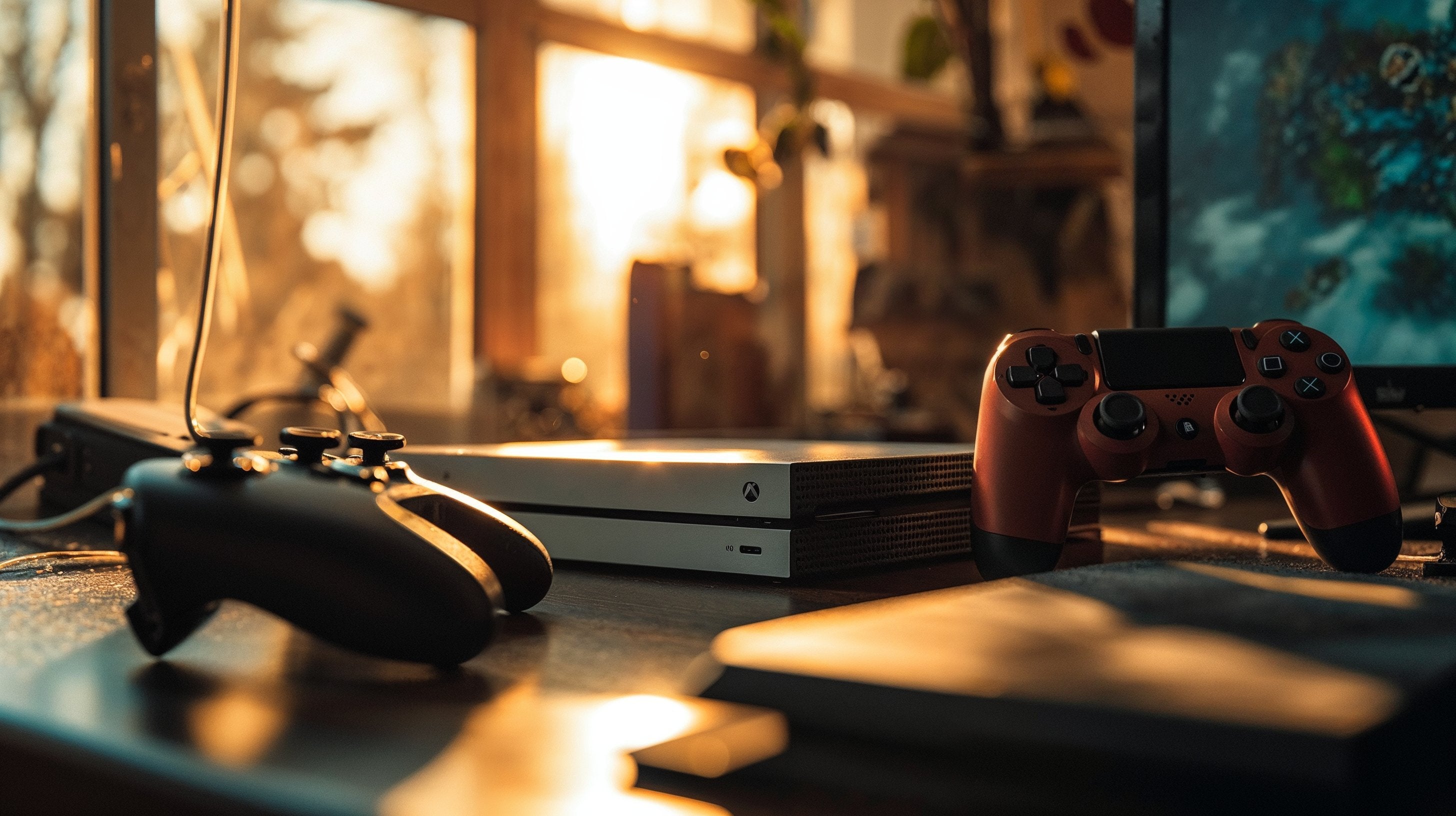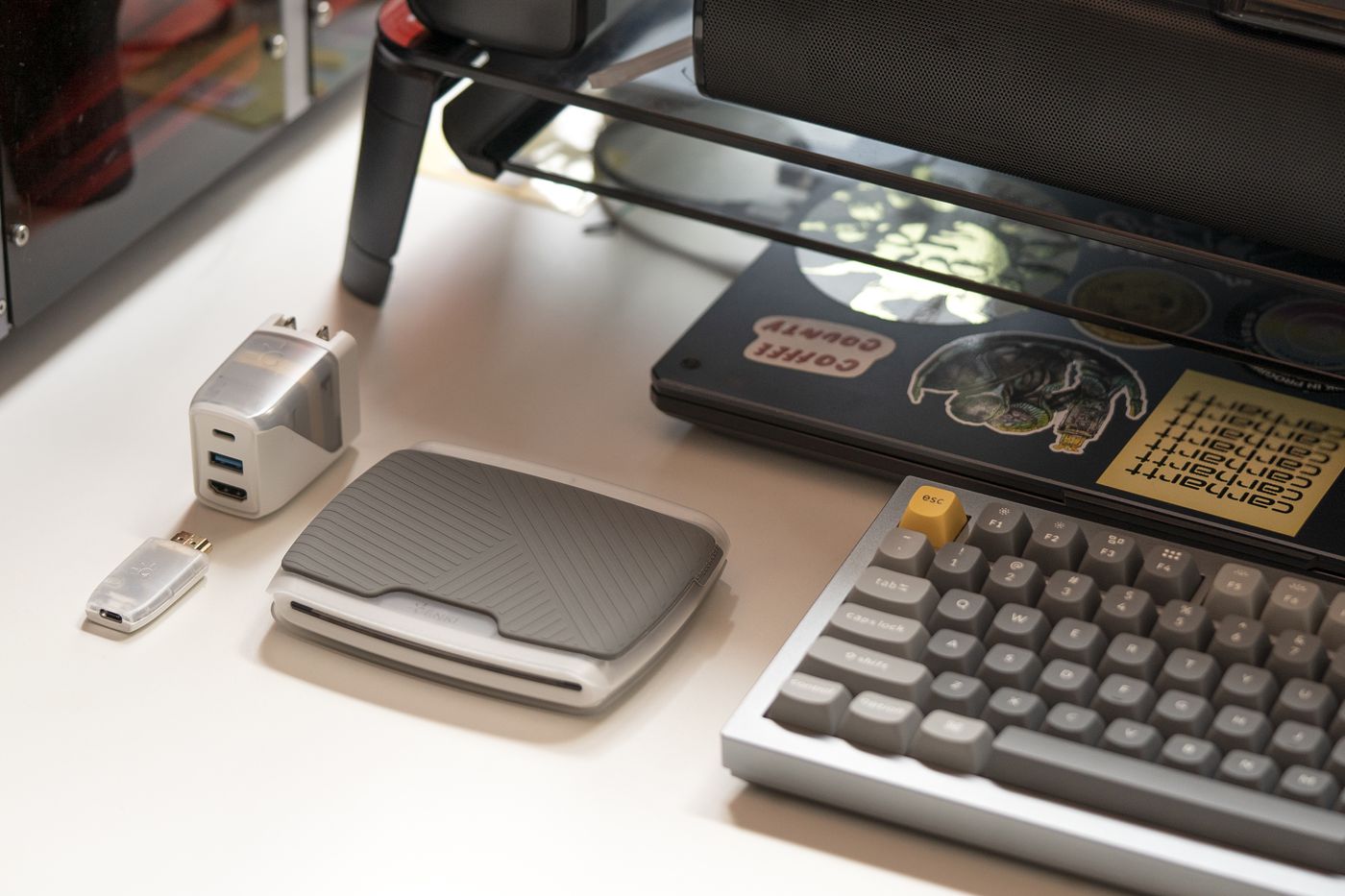This guide is for those using their own SSD to install Windows on their Steam Deck with SavePoint. We'll walk you through each step, helping you unlock a world of gaming possibilities beyond SteamOS. Ready? Let’s dive in!
Getting Started: Download Tools
1.1 Setting up the drive requires you to use a Windows 10/11 computer (ROG Ally works too)
1.2 Download Rufus to your Windows computer
1.2.2 Scroll down to the middle of the page and you will see the download links for the latest Rufus files’
1.2.3 Click to download the latest stable versions, standard or portable versions are fine (choose x64 if you have a 64-bit processor and x86 if you have a 32-bit processor)
1.3 Download Windows 11 ISO to your Windows computer
1.3.1 Navigate to https://www.microsoft.com/en-us/software-download/windows11
1.3.2 Navigate down to the section labeled “Download Windows 11 Disk Image (ISO) for x64 devices”
1.3.3 On the dropdown select Windows 11 (multi-edition ISO for x64 devices)
1.3.4 Click the blue “Download Now” button
1.3.5 You’ll be taken to a product language dropdown, select your preference (we typically use English International as there’s apparently less preinstalled apps)
1.3.6 Click the blue “Confirm” button
1.3.7 Click the blue “64-bit Download” button
1.4 Download Steam Deck drivers for Windows
1.4.1 Navigate to https://help.steampowered.com/en/faqs/view/6121-ECCD-D643-BAA8
1.4.2 Depending on whether you need drivers for Steam Deck OLED, or Steam Deck LCD, download all the drivers there. We recommend doing this on the computer rather than the Steam Deck just to make it easier - well because you need Wi-Fi drivers to even download the drivers.
1.4.3. For the Steam Deck OLED, make sure you download the drivers for the APU, SD Card reader, Wi-Fi, bluetooth, and audio and put them all into one folder and extract the zip files as needed (right click on the zip/compressed file -> Choose ' Extract All')
1.4.4. For the Steam Deck LCD, make sure you download the drivers for the APU, Wi-Fi, bluetooth, SD Card reader, and audio and put them all into one folder and extract the zip files as needed (right click on the zip/compressed file -> Choose ' Extract All').
Installing Windows on SavePoint
2.1 Plug in SavePoint with SSD installed into your Windows computer
2.1.1 Make sure the USB-C cable is rated at least 3.2 Gen 2 (10Gbps)
2.1.2 Plug in the USB-C cable into the SavePoint’s data transfer port (the icon with the 2 arrows going in the opposite direction)
2.1.3 Plug in the other side of the USB-C to your computers USB-C port

2.2 Open
Rufus and mount drive
2.2.1 Click “Show advanced drive properties” and select “List USB Hard Drives”
2.2.2 Under device make sure your SSD is selected
2.2.3 For the “Boot selection” select your Windows ISO file
2.2.4 For “Image option” select “Windows to Go”
2.2.5 Change the “Volume label” to SavePoint
2.2.6 Click the “Start” button at the bottom
2.3 Customizing Windows Install
2.3.1 A pop-up will appear, and you can select the Windows version you want - we recommend Windows 11 Home for minimum preinstalled items. (The N versions will prevent some apps from working like Xbox) and click OK.
2.3.2. We recommend you check the first two boxes and the last. The third and fourth are optional. The first one will protect Windows from messing up any of your internal Steam Deck installations but if you prefer to be able to access those internal files while booting from SavePoint you can and click OK.
2.3.2 Click “OK” on the warning popup (everything on your existing drive will be erased and replaced with Windows 11)
2.3.3 Wait for the green bar on the status to fill up and it’ll say “Ready” when it finishes, you can click “Close” to finish.

2.4 Copy the Steam Deck drivers into the SavePoint drive, we generally create a “SavePoint Drivers” folder in the main D:\ directory level with all of these drivers.
2.5 Disconnect SavePoint from Windows computer after the read/write has finished (avoid unplugging it while the light on SavePoint is blinking.
Installing Windows for the Steam Deck
3.1 Specifically for Steam Deck OLED, you will need to update your BIOS to version 3.6.9 or greater to access Bluetooth audio drivers
3.1.1 With your Steam Deck on and in the main screen, press the Steam button and navigate to the System Menu.
3.1.2 In the “Beta Participation” select “Beta” for the System Update Channel.
3.1.3 Click update now and press the Restart button after it’s done downloading.
3.2 Plug in SavePoint to your Steam Deck
3.2.1 Make sure the USB-C cable is rated at least 3.2 Gen 2 (10Gbps)
3.2.2 Plug in the USB-C cable into the SavePoint’s data transfer port (the icon with the 2 arrows going in the opposite direction)
3.2.3 Plug in the other end of the USB-C cable into the Steam Deck’s USB-C port
3.3 Ensure your Steam Deck is completely Shutdown (not in standby from a game)
3.4 Boot from SavePoint
3.4.1 Hold the Vol- button down while pressing the Power button on the Steam Deck
3.4.2 Select Genki SavePoint and push the A button to continue (if this doesn’t work, try booting with Vol+ and navigate to the Setup Utility → Boot → USB Boot → Enabled)
3.4.3 Windows will load sideways, don’t panic, we’ll fix it later
3.4.5 Select whatever country/region and keyboard language you would like
3.4.6 When the prompt for connecting to a network just click “I don’t have internet’ and click “Next” as we don’t have the Wi-Fi drivers installed yet
3.4.7 Agree to the Windows terms, and enter your name, we chose “SavePoint” and on the next screen you can either enter a password or leave the password blank so that it instantly boots in each time
Optimizing Windows and Setting Up Drivers for Steam Deck
4.1 Fix the display and orientation
4.1.1 Using the right touchpad, navigate to the desktop and right click the wallpaper (using the L2 button) and then select “Display settings” in the dropdown and left click it (using the R2 button). You can also use the touchscreen and tap and hold as a right click, and tap as a left click.
4.1.2 Scroll down with a tap and drag motion till you see the Scale and Display orientation sections
4.1.3 For Display orientation change the “Portrait” dropdown to “Landscape” and click “Keep Changes”
4.1.4 For Scale you can keep it at 125% or if you would like to see more at once we recommend 100%. Close the Window.
4.2 Enable the touchscreen keyboard (or if you have a full keyboard you want to use go for it)
4.2.1 Right click the bottom task bar and click Taskbar settings
4.2.2 Scroll down to the “Touch keyboard” section and select “Always” so you’ll be able to bring the touch keyboard up by tapping its icon on the bottom right whenever. Close the Window
4.3 Install the drivers for Steam Deck OLED only (for LCD skip to 4.4):
4.3.1 Navigate to the folder in Windows Explorer on the taskbar and then scroll down to where you put the driver files (This PC → SavePoint → SavePoint Drivers)
4.3.2 For your graphics drivers, navigate to the GFX_Driver folder and run “setup.exe” and when prompted whether you want to allow the app to make changes to your device click “Yes” and in the app when prompted click “Install”. For any additional popups just click “install anyway.” Click finish, if your screen turned sideways again repeat step 4.1
4.3.3 For your Wi-Fi drivers, navigate to the FC66E-WIN_WiFi_driver folder and right click qcwlan64.inf and select Install
4.3.4 For your Bluetooth drivers, navigate to FC66E-B_WIN_Bluetooth_driver folder and right click qcbtuart.inf and select Install
4.3.5 For your audio drivers navigate to the folder cs35l41-V1.2.1 and right click cs35l41.inf and select Install. Then navigate to the folder NAU88L21_x64_1.0.9.1_WHQL and right click NAU88L21.inf and select Install. Then navigate to the folder amdampdriverright and right clickamdi2scodec.inf and select Install
4.3.6 For your SD Card reader drivers, navigate to the BayHub folder and run “setup.exe” and it’ll ask you to restart
4.4 Install the drivers for Steam Deck LCD only (for OLED skip to 4.5):
4.4.1 Navigate to the folder in Windows Explorer on the taskbar and then scroll down to where you put the driver files (This PC → SavePoint → SavePoint Drivers)
4.4.2 For your graphics drivers, navigate to the GFX_Driver folder and run “setup.exe” and when prompted whether you want to allow the app to make changes to your device click “Yes” and in the app when prompted click “Install”. For any additional popups just click “install anyway.” Click finish, if your screen turned sideways again repeat step 4.1
4.4.3 For your Wi-Fi drivers, navigate to the RTLWlanE folder and run the “setup.exe” file
4.4.4 For your Bluetooth drivers, navigate to the RTBlueR folder and run the “InstallDriver.bat” file
4.4.5 For your audio drivers navigate to the folder cs35l41-V1.2.1 and right click cs35l41.inf and select Install. Then navigate to the folder NAU88L21_x64_1.0.9.1_WHQL and right click NAU88L21.inf and select Install. Then navigate to the folder amdampdriverright and right click amdi2scodec.inf and select Install
4.4.6 For your SD Card reader drivers, navigate to the BayHub folder and run “setup.exe” and it’ll ask you to restart
4.5 Preventing USB ports from powering off (optional, but it may prevent crashes when your console goes to sleep)
4.5.1 Click the search field on the taskbar and then tap the keyboard icon in the bottom right
4.5.2 Type in “Device Manager” and select it in the results
4.5.3 Scroll down to “Universal Serial Bus controllers”
4.5.4 Open each of the devices underneath here (there should be 5) and on the select the last tab where it says “Power Management” (you can skip the USB Composite Device)
4.5.5 Uncheck the “Allow the computer to turn off the device to save power” and close the Device Manager
Recommended Apps (optional)
For better compatibility for your Steam Deck controller (and analytics) to work in Windows there are two options that stand out;
Good luck and if you have any questions check out our lively Discord community





 2.2 Open Rufus and mount drive
2.2 Open Rufus and mount drive








Leave a comment
All comments are moderated before being published.
This site is protected by hCaptcha and the hCaptcha Privacy Policy and Terms of Service apply.